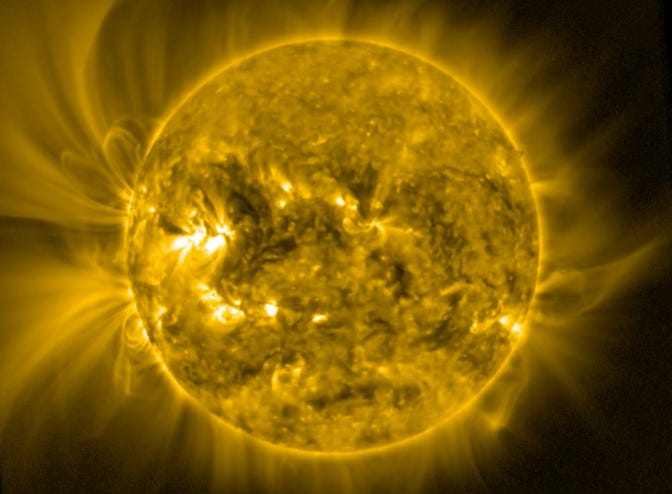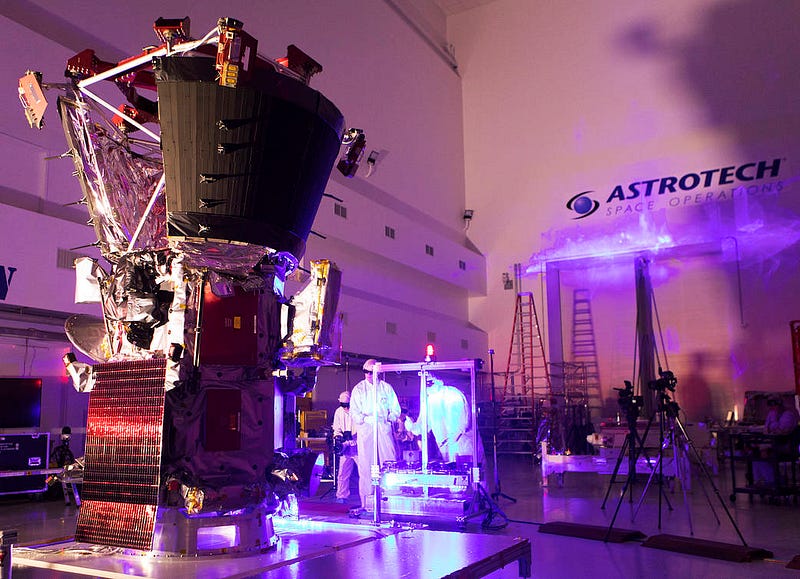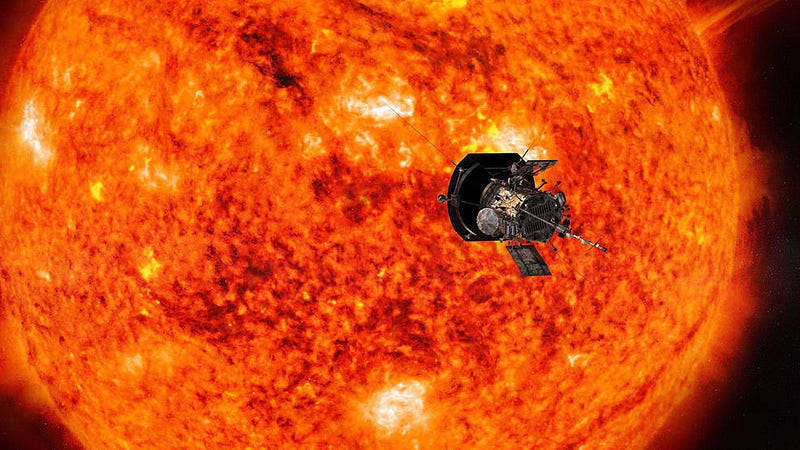Deciphering the Sun's Enigmatic Corona: A Scientific Journey
Written on
Chapter 1: The Sun's Greatest Mystery
The Sun harbors a perplexing mystery that has puzzled scientists for centuries, and recent developments suggest we might be on the verge of an explanation. To illustrate, think of a campfire: the heat is most intense when you are close to the flames, diminishing as you move away. Yet, intriguingly, the Sun's outer atmosphere, or corona, is significantly hotter than its surface. The cause of this contradiction remains elusive, but a promising new theory could provide answers. A spacecraft is being launched to approach the Sun closer than any previous mission, potentially confirming or disproving this hypothesis.

The Parker Solar Probe, which launched on August 12, 2018, aims to delve into the Sun's mysteries at unprecedented proximity. At its closest point, it will come within 6.4 million kilometers (about 4 million miles) of the Sun’s surface. This groundbreaking mission will allow scientists to investigate how the corona becomes superheated, forming plasma filaments that can influence our technology on Earth.

According to Justin Kasper from the University of Michigan and the lead investigator for the Parker mission, “The physics behind this superheating has perplexed us for 500 years. In just two years, we expect Parker Solar Probe to provide clarity.”
You Might Wonder Why Space is Heating Up...
Heating in the Sun’s corona operates differently than in other celestial bodies. Astronomers are still trying to determine how far the superheating extends from the Sun. In 2021, Parker is anticipated to cross into the solar atmosphere, thus clarifying the boundaries of this superheated region. Once there, it will collect data on particles and magnetic fields to help unravel the mystery surrounding our star.
Kasper and his team believe that magnetic fields within the corona may be responsible for this heating phenomenon, effectively “stirring” the corona and contributing to the elevated temperatures observed by astronomers. The corona itself stretches far beyond the Sun's diameter.
Adding complexity to this issue is the observation that various elements within the corona heat up to different extents. Surprisingly, some heavier elements can reach temperatures even hotter than those found in the Sun's core.
Understanding Alfvén Waves
In the corona, hydromagnetic Alfvén waves oscillate between the solar surface and the edge of the solar atmosphere. Beyond a certain distance, known as the Alfvén point, the solar wind travels faster than these waves, preventing them from returning to the Sun. This transition isn’t sharp, as a gradual shift rather than a defined boundary has been identified.

Craig DeForest, a solar physicist at the Southwest Research Institute, noted, “We conclude that there isn’t a distinct Alfvén surface. Instead, there exists a broad ‘no-man’s land’ or ‘Alfvén zone’ where the solar wind gradually disconnects from the Sun.”
Researchers utilized data from the Wind spacecraft to estimate the extent of the superheating zone, which appears to span between 10 and 50 times the Sun's diameter. A precise measurement remains elusive due to the need for estimations in certain variables. The Alfvén point also fluctuates with solar activity, indicating a dynamic relationship with the surrounding corona. The Parker Solar Probe may shed light on this boundary and enhance our understanding of the solar atmosphere.
Scientists have solved the mystery of Oumuamua and it's not that simple. This video delves into the complexities surrounding the celestial object Oumuamua and the new insights gained from studying it.
One Ring to Rule Them All...
“In the midst of all dwells the Sun. For who could set this luminary in another or better place in this most glorious temple, than whence he can at one and the same time brighten the whole.”
— Nicolaus Copernicus
The corona becomes visible during solar eclipses as a luminous ring encircling the Sun. This ring glows due to superheating effects, making the Sun's atmosphere detectable to amateur astronomers on Earth. The superheating within the corona can propel charged particles towards Earth, potentially disrupting satellite communications. By understanding the corona's nature, solar scientists hope to better predict how these solar activities might impact life on our planet.
Solving the Mystery of @TheSunVanished - Inside A Live. This video explores the enigmatic phenomena surrounding the concept of the Sun disappearing and the implications of such events.